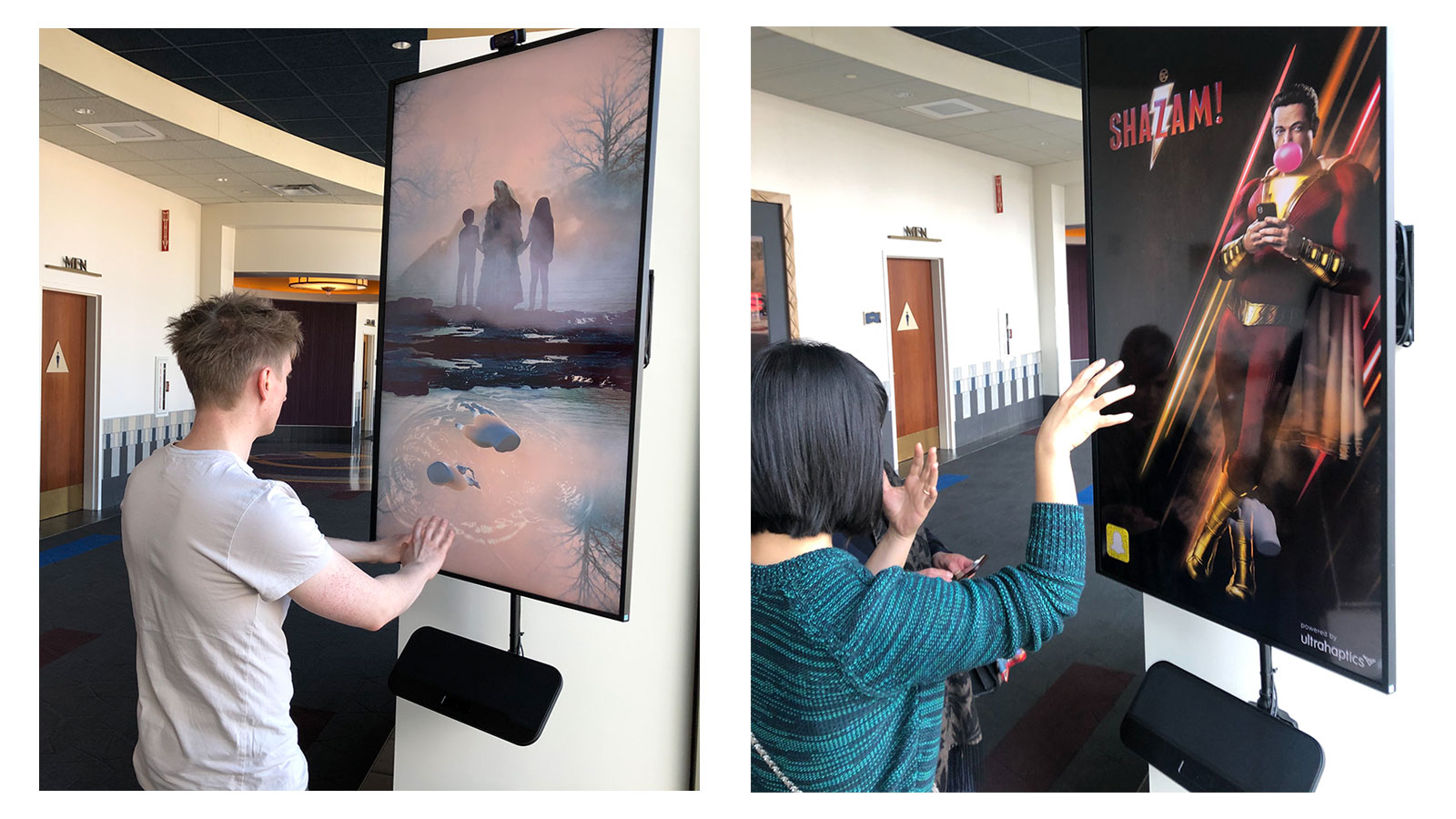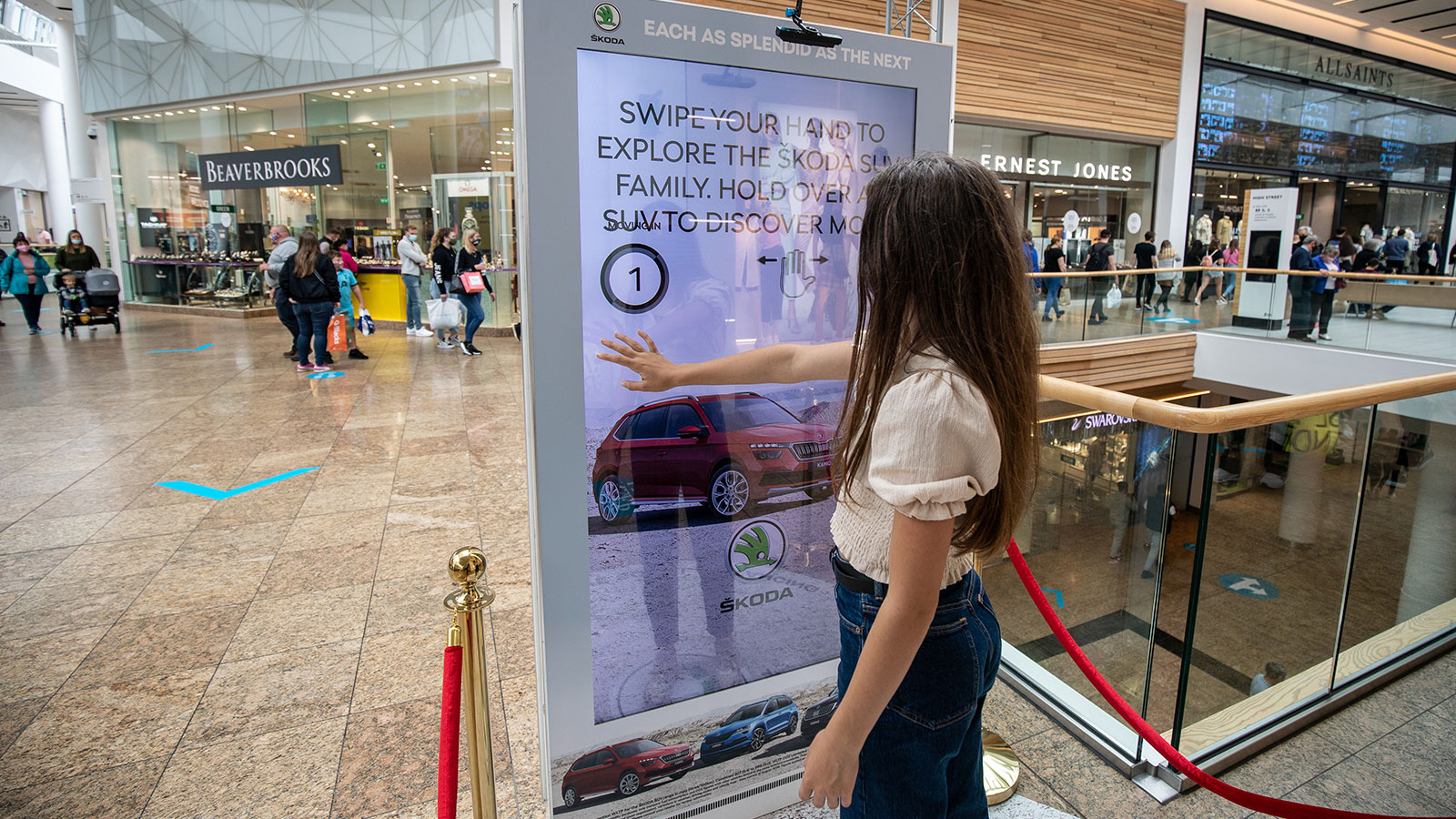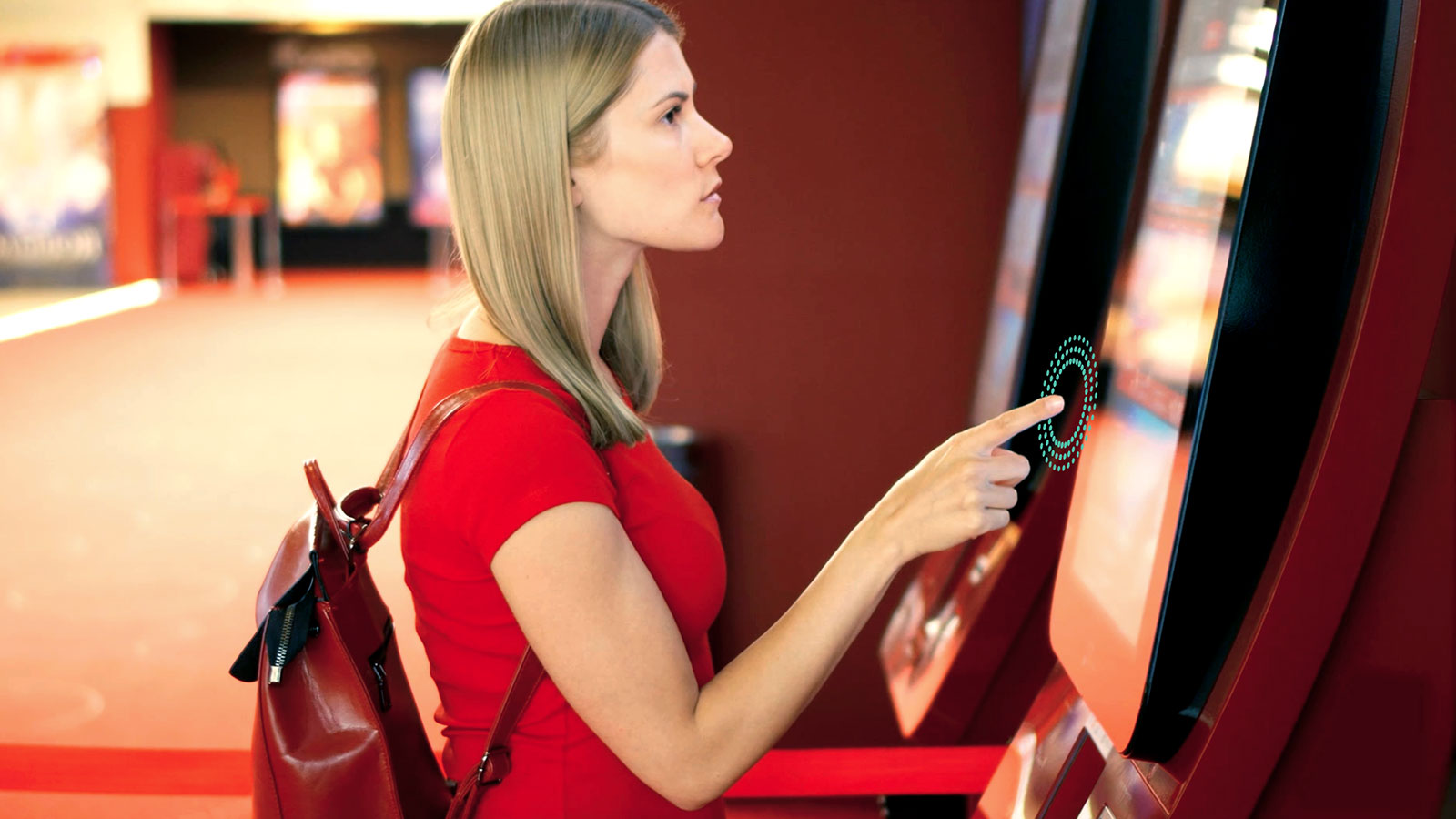
Interactive Kiosk Experience Trends 1: Beyond Hygiene
Posted; June 28, 2021
COVID-19 made touchless technology a key trend in interactive kiosks. But while the pandemic catalyzed demand, the appeal of touchless solutions goes far beyond hygiene. In this two-part series, Saurabh Gupta, Director of Product, looks at how touchless solutions are converging with other trends in self-serve kiosks and digital out-of-home – to create the next generation of interactive kiosk experiences.
COVID-19 dramatically altered consumers’ perception of the risks of touch screen kiosks. 80% of people now think public touch screens are unhygienic.
In response to this sea-change in consumer attitudes, touchless technology has become a central trend driving interactive kiosk experience development. Typically, touchless experiences are powered by gesture control, IR sensing, voice recognition, facial recognition, or second screen/mobile app solutions.
This move towards touchless experiences was undeniably catalyzed by the pandemic. But it also converges with wider design and technology trends: the emergence of 5G and IoT, the rise of customer experience, the reinvention of bricks-and-mortar retail, and the post-pandemic necessity of extracting value from existing installations.
In this two-part series, I’m looking in detail at how this convergence accelerates the evolution of self-serve kiosks and digital advertising – delivering richer, better-connected, and more immersive experiences that drive brand lift and sales impact.
This first blog looks at how touchless technology converges with:
Head over to the second blog in this series to find out more about how touchless technology is converging with 5G and IoT – and how, together, they're enabling bolder objectives for interactive kiosk installations. I also look at how touchless technology can be used to extract value from existing installations, and key considerations when implementing touchless technology.
Customer experience: The new battleground in interactive kiosk design
Consumers now base loyalty on customer experience as much or more than price and product. According to PwC, 73% of people list customer experience as an important factor in their buying decisions. 42% would pay more for a friendly, welcoming experience.
On the one hand, consumers hunger for a more personal connection with brands.

On the other, social media “cancel culture” and heightened demands for customer safety put tolerance for brand mis-steps at an all-time low. During the pandemic, consumers weren’t shy of taking to social media or the press to complain about brands they felt didn’t meet adequate standards of cleanliness.
This makes developing interactive kiosk experiences based on customer empathy and user-centric design more important than ever.
Using touchless technology to enhance interactive kiosk customer experiences
Our research has shown post-pandemic consumers have strong views about hygiene and interactive kiosk experiences, which brands ignore at their peril. But the picture is actually much more interesting than a simple focus on hygiene, important though this is.
Hygiene certainly matters to consumers. But they also don’t want to make a trade-off between hygiene and customer experience.
Smart, intentional and user-centric touchless experiences do more than just solve hygiene concerns. They enhance interactive kiosk experiences by giving people new ways to engage. These don’t merely match but exceed what touch screens offer.

When CEN worked with us to install touchless solutions in their network of cinema lobby screens, they weren’t just looking to ensure customer safety. They also actively wanted to enhance customer experience.
Our gesture control solutions don’t just mimic the action of a touchscreen (although they can do that). They extend interaction beyond 2D interfaces into the z-plane. There’s also the additional option to add immersive mid-air tactile effects.
This means consumers can interact using larger, three-dimensional movements and gestures. It quite literally opens up a new dimension of interactive kiosk experiences.
Find out more about Ultraleap’s touchless solutions
The return of bricks and mortar (but not as you know it)
As we move out of the pandemic, bricks and mortar stores are bouncing back – and showing a surprising degree of resilience to e-commerce.
Post-pandemic retail, though, will be reimagined as part of an omnichannel experience. With seamless transition between physical stores and digital platforms critical, in-store interactive kiosks are far more than just a nice-to-have.
The focus is also squarely on maximising the value of in-store when measured against digital platforms. In-store will be heavy on the multi-sensory and immersive experiences that differentiate it from its digital counterpart – and light on contact with shared surfaces.
Touchless interactive kiosks create in-store experiences that can’t be matched online
In this environment, innovation in touchless technology not only reduces contact with shared surfaces. It also differentiates in-store by creating interactive, immersive and multi-sensory brand experiences that can’t be matched online.
For example, Ocean Outdoor used Ultraleap’s touchless technologies to meet the brief of LEGO’s Rebuild the World campaign. LEGO fans of all ages could virtually reach into a digital billboard at Four Dials, Westfield Stratford City, move, rotate, and feel LEGO bricks to build models on screen.
The award-winning interactive installation gave LEGO fans an entirely new way to play and engage with the brand, distinct from the digital components of the campaign.
A golden age of innovation in interactive kiosks?
Post-pandemic customers are more receptive than ever to in-store changes, according to McKinsey. Combine that with business imperatives to meet the expectations of next-normal consumers, and the emergence of intelligent and responsive new technologies – and you can expect a surge of innovation in interactive kiosk experiences.
We’re excited to be a part of it.
Saurabh Gupta leads Product and Commercial Strategy for the out-of-home sector for Ultraleap.
The second blog in this series covers how touchless technology is converging with 5G and IoT – and how this enables more adventurous objectives for interactive kiosks. It also covers the need to extract value from existing installations, and practical considerations when integrating touchless technology.

Explore Ultraleap’s gesture control solutions
Ready to move beyond?
Explore our blogs, whitepapers and case studies to find out more.




